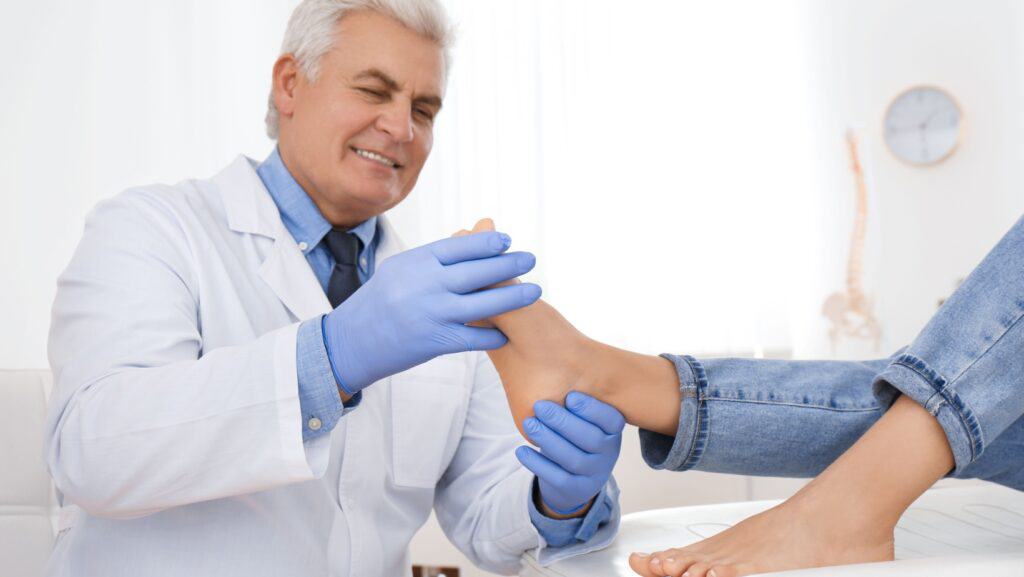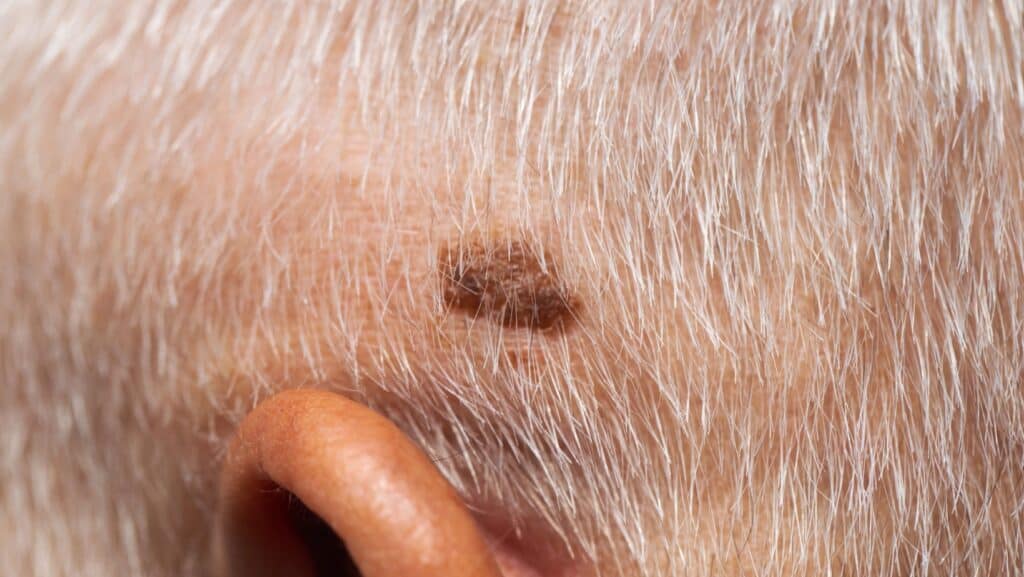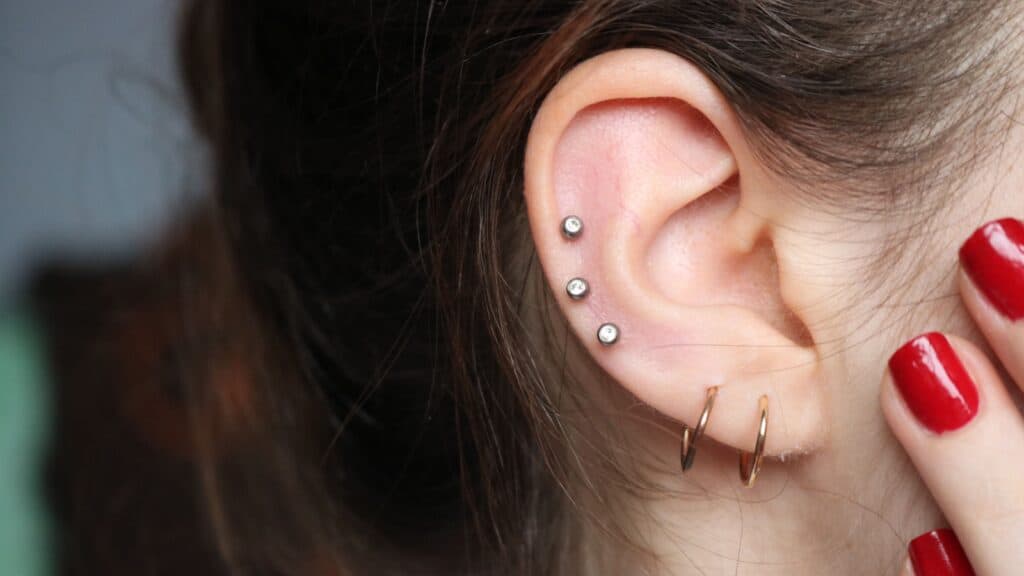10 Surprising Places Melanoma Can Hide: Skin Cancer’s Unexpected Locations
Melanoma, the most dangerous form of skin cancer, is often associated with sun-exposed areas of the body. However, this aggressive cancer can develop in some unexpected places, catching many people off guard. This article explores ten surprising locations where melanoma can appear, highlighting the importance of thorough skin checks and early detection, as well as general recommendations.
1. Under the Fingernails or Toenails

Subungual melanoma can develop under the nails, often appearing as a dark streak. It’s most common in the thumb or big toe. This type of melanoma is not typically related to sun exposure and may be mistaken for a bruise or fungal infection.
2. Soles of the Feet

Acral lentiginous melanoma, a rare subtype, can occur on the soles of the feet. It often appears as a dark patch distinct from surrounding skin and is more common in people with darker skin tones.
3. Palms of the Hands

Similar to the soles of the feet, melanoma can develop on the palms. It may appear as a small nodule that is tan, brown, or white in color.
4. Scalp

Melanoma on the scalp can be particularly dangerous as it’s often hidden by hair and may go unnoticed until it’s in an advanced stage. Regular scalp checks and annual skin cancer screenings are crucial for early detection.
5. Inside the Ear

While rare, melanoma can develop inside the ear canal. This location makes it difficult to detect without a thorough examination by a healthcare professional.
6. On the Eyelid

Melanoma can occur on the eyelid, though it’s less common than other types of skin cancer in this area. Any changes in appearance, swelling, or persistent eyelid issues should be evaluated by a doctor.
7. Between the Toes

The spaces between toes are often overlooked during skin checks, but melanoma can develop here. This location is considered a “hidden melanoma” site.
8. In the Eye

Ocular melanoma can develop in the uvea, the layer of tissue beneath the white of the eye. It may cause vision changes and is typically diagnosed during an eye exam.
9. On the Genitals

Melanoma can occur on the genitals, an area that rarely sees sun exposure. This underscores the importance of full-body skin checks.
10. Inside the Body

Mucosal melanoma can develop in the mucous membranes lining various internal organs, including the nose, mouth, esophagus, and urinary tract. These are particularly difficult to detect and may be mistaken for other conditions.
For the general population at average risk

The American Cancer Society recommends cancer-related check-ups, including skin exams, for people aged 20 and older during periodic health exams.
Many experts suggest getting a full body skin exam by a dermatologist every 2-3 years is sufficient for about 80% of people.
Annual screenings are not universally recommended for those at average risk.
For those at higher risk

People with risk factors like family history of melanoma, many atypical moles, or previous skin cancer may need annual full-body skin exams.
Some high-risk individuals may need exams every 3-6 months.
Self-exams

Monthly self-exams are recommended to check for any changes.
Use mirrors or ask for help to check hard-to-see areas.
When to see a doctor

If you notice any suspicious or changing spots, make an appointment with a dermatologist promptly.
Conclusion

Melanoma’s ability to develop in these unexpected locations emphasizes the need for comprehensive skin checks and awareness of changes throughout the body. While some of these areas may rarely see sunlight, they are not immune to this dangerous form of skin cancer. Regular self-examinations and annual check-ups with a dermatologist are crucial for early detection and successful treatment of melanoma, regardless of where it may appear on the body.
10 Symptoms of Pancreatic Cancer You Don’t Want To Ignore

Pancreatic cancer is one of the deadliest forms of cancer, with a five-year survival rate of less than 10%. Often called a “silent killer,” it typically shows few early symptoms, making it challenging to detect until it has reached an advanced stage. According to the American Cancer Society, over 62,000 new cases of pancreatic cancer will be diagnosed in the United States in 2024, with nearly 50,000 deaths. This article identifies 10 symptoms of pancreatic cancer that Americans frequently overlook and provides direct links to authoritative sources for more detailed information. Understanding these signs can help raise awareness and potentially lead to earlier diagnosis.
READ: 10 Symptoms of Pancreatic Cancer You Don’t Want To Ignore
Confusing Heart Attack Warning Signs in Women: 12+ Symptoms You Should Not Ignore!

Heart attacks, or myocardial infarctions, are critical medical emergencies where the blood supply to a part of the heart is suddenly blocked, usually by a blood clot. While heart attacks are commonly associated with men, they are a significant health risk for women as well. In fact, heart disease is the leading cause of death for women in many parts of the world, surpassing even breast cancer. Understanding how to detect a heart attack, why women are susceptible, and the relevant statistics is crucial for improving outcomes and saving lives.
READ: Confusing Heart Attack Warning Signs in Women: 12+ Symptoms You Should Not Ignore!
Why More Young Adults Are Experiencing Strokes

Stroke rates in younger adults (under 50) have been increasing, while rates in older adults have shown different trends. Several sources have highlighted this trend. Here is some data to consider: READ: Why More Young Adults Are Experiencing Strokes
Women Are At Far Higher Risk For Dementia Than Men. Why?

Studies show that women are more likely to develop dementia than men. In fact, twice as many women suffer from Alzheimer’s disease, the most common form of dementia. This higher risk is partly because women tend to live longer than men, and age is a major factor in dementia. However, whether women face a greater risk at the same age as men is still up for debate among researchers. READ: Women Are At Far Higher Risk For Dementia Than Men. Why?
Join Us

Join us on this empowering journey as we explore, celebrate, and elevate “her story.” The Queen Zone is not just a platform; it’s a community where women from all walks of life can come together, share their experiences, and inspire one another. Welcome to a space where the female experience takes center stage. Sign up for our newsletter so you don’t miss a thing, Queen!







